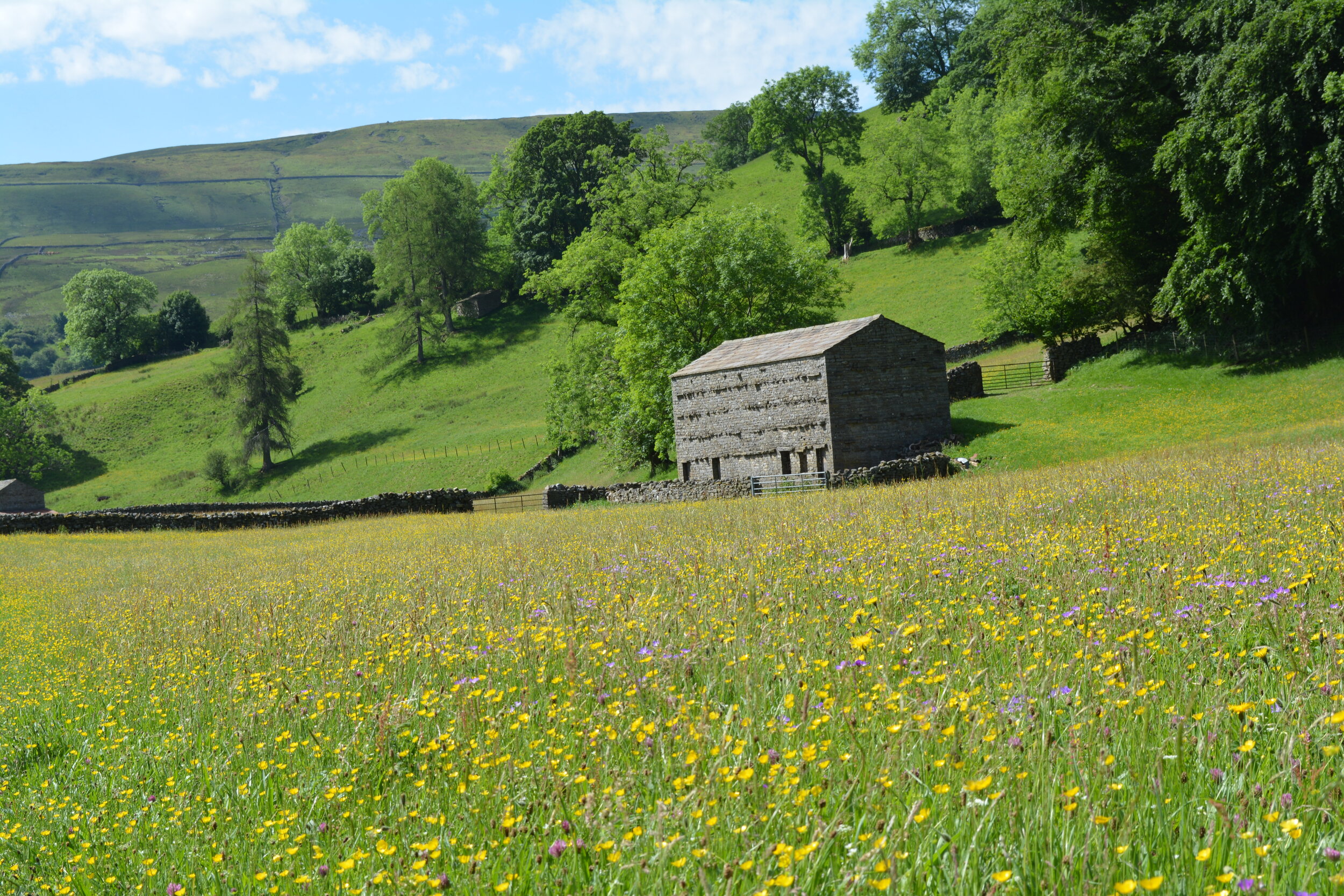Yorkshire Dales hay meadows – their importance and how to visit them!
The hay meadows are looking absolutely stunning around the Yorkshire Dales at the moment. In late spring and early summer there are few prettier places to be, with the fields filled with a riot of yellows and pinks. But, as well as looking beautiful, they also have a really important ecological role to play by providing a home to many rare or declining species, including wildflowers, grasses, pollinators and lots of other wildlife (including one of our favourites, the brown hare).
Just over 15% of the UK’s surviving hay meadows are found here in the Yorkshire Dales, and there can be an incredible 120 species of wildflowers and grasses per field. However, despite their seemingly universal appeal, hay meadows are increasingly at risk and we’d love it if this article encourages you to visit some of our hay meadows and help protect them for the future!
The work of the Yorkshire Dales Millenium Trust
The Yorkshire Dales Millenium Trust does some great work in trying to conserve and restore these precious upland habitats through its ‘Hay Time’ and ‘Bee Together’ projects. The situation was so perilous that, when the YDMT first started restoring hay meadows in 2006, less than four square miles of species-rich hay meadow habitat remained in the whole of the UK. In fact, over the last seventy years we've seen a staggering 97% of these meadows lost, making them one of the UK’s most threatened habitats and putting hundreds of species of native wildflowers and plants, bees, birds and other wildlife at risk.
The work of the YDMT is definitely helping, but meadow restoration is a long-term process, and there’s always more to do! As well as helping the native flora and fauna, a traditionally managed meadow is seemingly doing its bit in helping to tackle climate change, as they store more carbon than species-poor meadows and retain rainwater and nitrates better, so help to reduce flood risk and water pollution.
You can find out more about the work of the YDMT and how you can help on their website: www.ydmt.org/what-we-do/hay-time.
The famous meadows around Muker
If you would like to get out on a walk to explore these beautiful meadows, setting off from Muker is a classic option (and for good reason, the meadows are stunning!). However, it is extremely popular so we would suggest starting early in the morning or heading out in the evening if you can, to help spread the crowds.
Muker itself is a lovely little place full of traditional stone buildings and plenty of facilities – a pub, several shops, a couple of cafes and public toilets! Heading out of the back of the village you soon find yourself following the inviting stone-flagged footpaths that take you through the famous meadows of upper Swaledale (please stick to the paths – this will ultimately be feed for livestock that farmers work hard for, not to mention that it damages the plants, disturbs wildlife and spoils the display for other visitors!).
We love heading through the meadows as the beginning of a circuit of Kisdon Gorge and, if you would like to do this 7-mile walk yourselves, there is a link to a PDF of route instructions at the end of the blog (NB: the normal caveats apply – it’s for guidance only, take a map and know how to use it, footpath damage, rerouting etc. is beyond our control and the route notes will not be updated to reflect this!).
Alternatively, on crossing the River Swale, turn right and you will pass through many more much less visited meadows as you head towards Ivelet and then Gunnerside.
Walks through other wildflower meadows
While the meadows around Muker get much of the publicity, there are many other impressive meadows all over the Dales at this time of year, and usually without the crowds.
The YDMT has compiled a handy list of several short walks through some of the most beautiful meadows around the Dales, which you can find here: www.ydmt.org/yorkshire-dales-wildflower-meadows.
Or just head out and explore – you’ll find that almost any walk around the valley floors at this time of year will take you through some stunning meadows. Areas such as upper Wharfedale, upper Wensleydale and Littondale spring to mind, but there are many others!
Species to spot
When out and about, some of our favourite species to spot in the wildflower meadows are: the delicate purple Wood Crane’s Bill (a favourite of bumblebees); yellow Rattle (an annual plant which needs to shed its seeds before the grass is cut for fodder); Melancholy thistle (which looks like a ‘normal’ thistle but without any spines, and was historically used as a potion to prevent 'melancholia' - a form of depression); and Eyebright (a small white flower which is really beautiful when looked at up close, and has historically been used to cure eye problems!). There are many more amazing species to spot through and we’d love to see your photos on Instagram or Facebook (please tag us @muddybootswalkingholidays) if you get chance to visit!
The Yorkshire Dales National Park has a useful page on hay meadows, with some more background information and pictures of some of the species you may see, to help you idenitfy them: www.yorkshiredales.org.uk/about/wildlife/habitats/grassland/haymeadows/.



